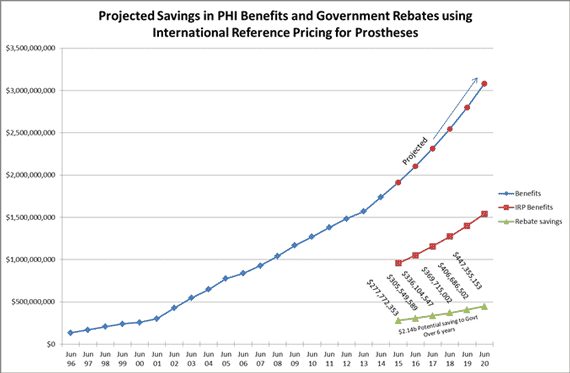Private Healthcare Australia has renewed calls for the Australian Government to reform prostheses pricing rules following a Federal Court action launched by a United States medical implant manufacturer.
PHA Chief Executive Dr Michael Armitage said the Australian Government would save $2.6 billion between now and 2020 by reforming prostheses pricing so that Australians paid no more than international consumers.
US Company, Applied Medical, is suing the Department of Health over the fixed private health insurance rebate for its laparoscopic clip appliers which it claims is four times the fair price and therefore preventing competition in the market.
Dr Armitage says PHA has repeatedly urged the Government to review the legislated benefits payable for prostheses in Australia as they were “up to five times higher than prices paid for the same items in comparable economics such as the United States and the United Kingdom.”
Dr Armitage said in 2014 the total benefits paid by health funds for prostheses was $1.8 billion, amounting to around 14% of all hospital benefits paid.
“Prostheses pricing reform could save the Australian Government around $246 million per year instantly from the contributions it makes to premiums through the Private Health Insurance Rebate. Savings could reach around $421 million per year by 2020.”
“In addition to savings, pricing reforms will contribute to a more efficient health system leading to better safety and quality in healthcare and improved patient outcomes,” said Dr Armitage.
The above graph tracks implanted medical devices benefits to date in Australia. The blue line shows how implanted medical devices benefits in Australia would increase to 2020, based on the current pattern of increased utilisation only and assuming that benefits do not increase. If benefits paid in Australia for implanted medical devices were to increase, we would experience exponential growth in implanted medical devices expenditure.
The red line shows the potential savings in Australian implanted medical devices benefits if we used the French prices for the same implanted medical devices. These estimates are based on conservative estimates for identical ICDs, pacemakers and coronary stents.
The green line gives a rough estimate potential savings for the Australian government private health insurance rebate, assuming the Government pays 30% of each prosthesis.
Media contact: Jen Eddy (02) 6202 1000

